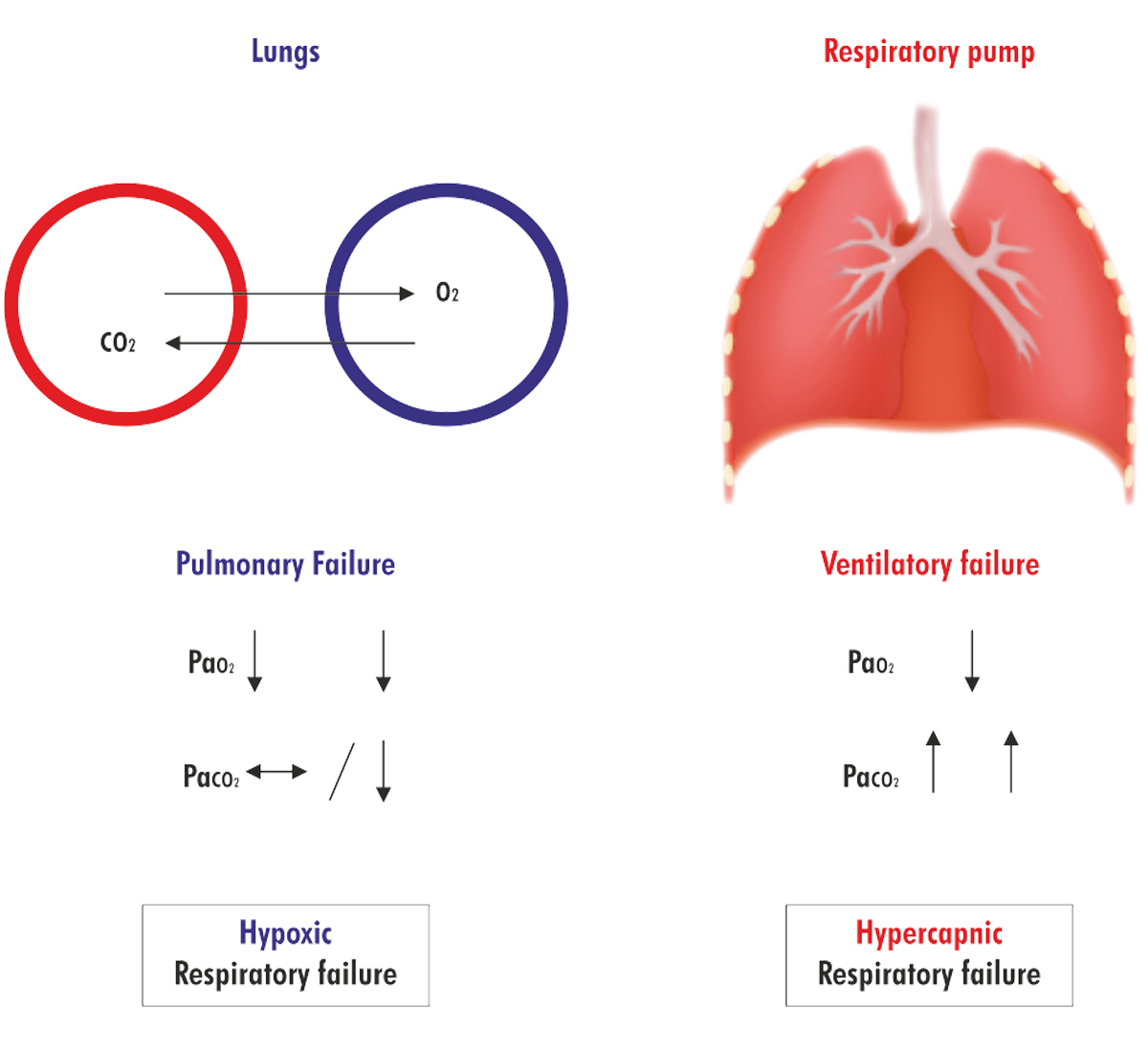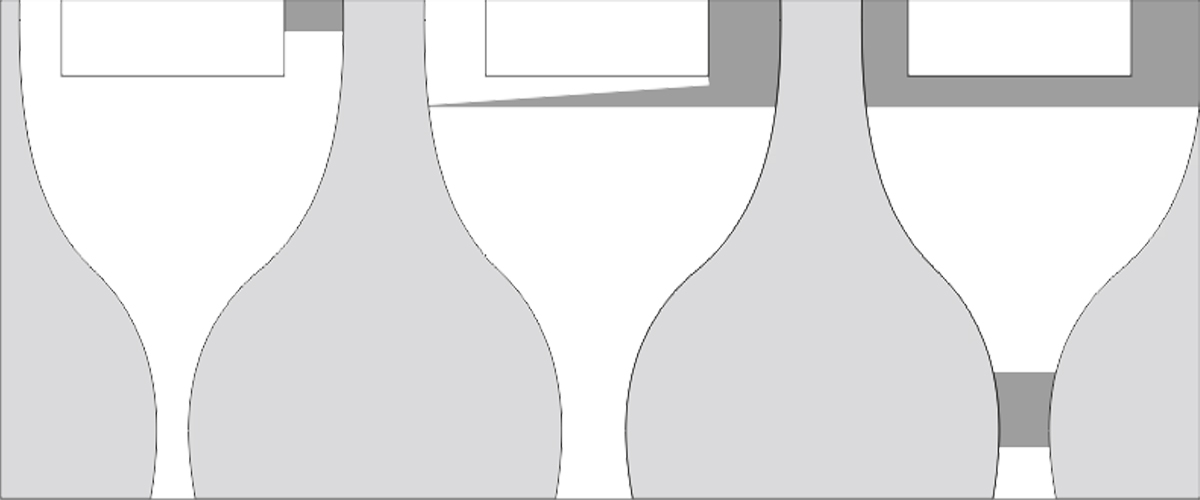Pathophysiology Of Respiratory Failure

Lung models, normal and abnormal


Key Points
Acute Respiratory Failure is a diagnosis based on
1. Arterial Blood Gas
2. History
3. Clinical Assessment
4. Chest X-Ray
- Acute Respiratory Failure can be defined as PaCO2 = 8.0 kPa (60mmHg).
- Classification of ARF
1. Hypoventilation
2. Chronic Airflow Limitation
3. Acute Respiratory Distress Syndrome (ARDS) - Respiratory system can be broadly divided into a gas exchange apparatus called the lung, and a pump apparatus, consisting of respiratory muscles, chest wall and central control system.
The latter is referred to a ventilatory pump. - Mechanism of Acute Respiratory Failure can be broadly divided accordingly
1. Gas exchange failure: gas exchange failure is caused by mismatch between ventilation and perfusion in different parts of the lung. Efficacy of each gas exchange unit depends upon the
balance between the ventilation and perfusion it receives. This is called ventilation and perfusion ratio, Va/Q. In ideal lung unit, this ratio is one. When lung disease develops the balance between ventilation and perfusion is disturbed so this called Va/Qmismatch. This leads to gas exchange failure with the development of hypoxemia and hypercapnia. Hypercapnia triggers the control system and patient starts hyperventilating and thus normalizing his or her PaCO2, the end result is Hypoxemia and normocapnia.
2. Ventilatory pump failure:
Ventilatory pump failure can be caused by
a. Reduction in Central respiratory drive
b. Mechanical defect in chest wall
c. Respiratory muscle fatigue

